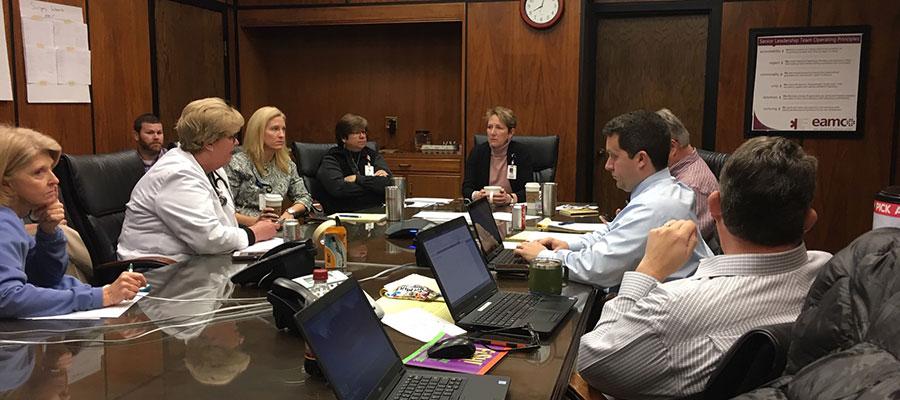East Alabama Medical Center highlights need for emergency preparedness, community partnerships

As John Atkinson sat watching the local weather on March 3, he quickly understood the severity of the tornado that was sweeping through the region at gusts of nearly 170 mph.
“The weather guys were in awe of what was showing up on the screen,” said Atkinson, director of public relations and marketing for East Alabama Medical Center in Opelika.
The tornado touched down about 10 miles south of EAMC, ultimately claiming 23 lives. But as Atkinson watched the news coverage at home, he told his wife he wasn’t going to wait to get a call from the hospital asking him to come in. He simply went, as did many EAMC clinicians and staff. In addition to the hospital’s full-time chaplain, five associate chaplains and a safety officer on site to tend to patients and their families, EAMC’s retired psychiatry director drove 45 miles to help.
“We received patients for about four to five hours straight,” Atkinson said. “It was an all-hands-on-deck situation.”
As 60-plus patients and countless family members arrived — some together, some not — hospital officials quickly had to open alternate care areas for patients and have family members gather in the main lobby due to overflow in the 27-bed emergency department and the waiting room’s inability to hold the influx of family members searching frantically for missing victims.
Among the tornado’s victims was Maggie Robinson, R.N., a vibrant employee who would have celebrated 40 years at EAMC this summer.
EAMC employees learned of the news and had only a quick moment to grieve before they had to continue caring for wounded patients.
Leaders at EAMC later organized a memorial service for Robinson at the hospital and paid their respects in a standing room-only ceremony.
“We learned her middle name was ‘Delight,’” Atkinson said. “Her parents named her that, but she truly lived it every day.”
From prep to real-life trauma care: lessons learned under pressure
EAMC conducts disaster drills twice a year, and tornadoes are usually part of the scenario, since they are the top risk for the region. One was actually scheduled for later in March but was ultimately cancelled since the hospital endured a real event.
“There is this mentality that ‘drill time is not real time,’ but a lot of things you plan for – the processes and procedures – come into play when the real deal happens,” Atkinson said. “I cannot stress enough the importance of taking these drills seriously when your hospital does them.”
In addition, Atkinson urges hospitals and health systems to develop community partners in the areas they serve and to think through how they can help each other best serve patients in the event of an emergency or natural disaster.
“Relationships that you build within your community definitely come into play,” said Atkinson. “Whether it’s the police department, the sheriff’s office, EMA [emergency management agency], and others, it’s important to include these people in your drills and to have strong relationships with them, because they are very key at that time.”

